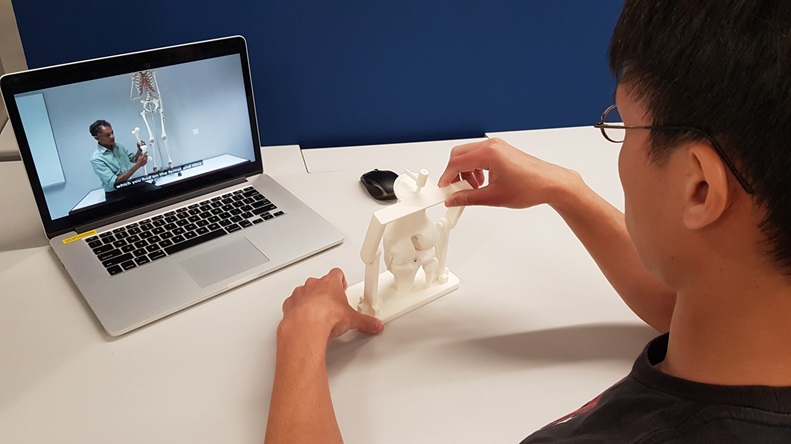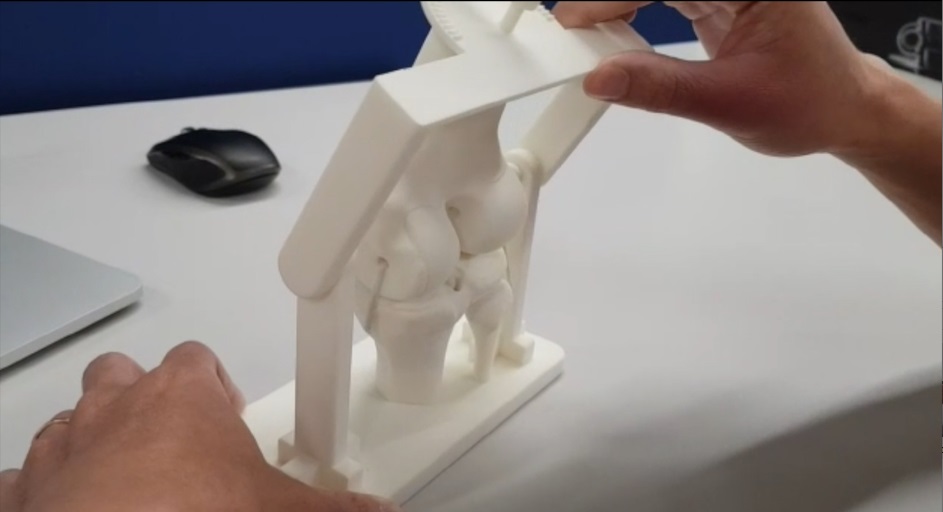
Understanding Knee Joints
Collaborators
This project was done in collaboration with the Department of Anatomy, National University of Singapore.
Overview
Physical and virtual learning tool to enhance spatial understanding of knee joint movement.
Background
The study of anatomical information is inherently the spatial understanding of 3D structures and positions of objects when they are manipulated. The complete learning of SAK includes a configurational as well as functional understanding of the anatomical structure and its movement within the 3D body space. Students with complete understanding of SAK can visualize the information by rotating the images in their mind to establish relationships between structures and movements. In contrast, students with poor understanding of SAK can only recall the list of structures and struggled to perceive 3D configurations and movements dynamically.
Key Problem(s)
Medical students who have poorly developed visualization abilities memorize spatial knowledge with little understanding, and are unable to manipulate the information to make sense of the spatial relation of a human structure. The implications on students with poorly developed visualization capabilities extend beyond academic performance, as there may be potential negative impact on learning during their clinical training and practice.
Objective
The objective of the project is to explore if cognitive prosthetics such as the physical and virtual models help students learn more effectively.
Solution
Physical and virtual knee joint models were developed to study if the spatial understanding of the knee joint movement will be enhanced. Although many studies have shown positive influence of using animated models, there is very little principled or empirically established guidance available as to what is required to maximize educational effectiveness. This study compares the use of different mediums such augmented reality, virtual reality and physical models to understand the impact of the delivery medium on the learning outcome.
Impact
The result of this study will help evaluate learning affordance for spatial complex information. Future instructional designers can harness the potential pedagogic advantages and shortcomings of each intervention to save financial and resource costs while implementing similar technology.
Gallery


Project Contact
Yen Ching-Chiuan
didyc at nus.edu.sg
Team Members
Sean Chng Choon Ern
Mandi Lee
Cai Bohong